“This land is mine and my children’s by moral right. We use it!”
Myles Dunphy, the father of NSW conservation, 1920.
Although that statement was made nearly 100 years ago many Australians still feel strongly about their sense of place and bond with their country. Heritage and the freedom is important to us.
That is why the changes for horse riding in wilderness areas of national parks is being celebrated by those passionate about their heritage and recreation.
Earlier this year the New South Wales Minister for the Environment adopted amendments to allow horse riding in locations that were part of a horse riding wilderness trial. The locations were
- Shoebridge Track, Deua and Monga national Park, Georges Pack Track and WD Tarlinton Track, Deua National Park.
- Nine Mile and Ingeegoodbee Trails, Kosciuszko National Park.
- Dicks Hut Fire Trail and River Road Trail, Mummel Gulf National Park.
The past policy of the NSW Wilderness Act 1987 and Wildlife Act 1974 has been to exclude horse riding from all wilderness areas. Prior to the recent adoption of the changes in Plans of Management of the four National Parks a two year study to monitor these specific tracks and trails for environmental damage by horses was undertaken. The study found that continuing traditional use would not cause any adverse damage to the areas.
There are many who are against horse riding in national parks and there was an abundance of submissions disapproving of any changes to Plans of Management. In fairness both sides are passionate about their country and how it is used.
A concerted campaign to win the tracks back was spearheaded by a community group called Access for All Inc. It was formed in 1999 dedicated to achieving access to public lands, such as national parks and wilderness areas for responsible recreation, education and conservation of natural and cultural heritage. Horse riding groups combined with AFA and together lobbied hard with demonstrations, submissions, interviews, articles, giving evidence before a parliamentary enquiry into the Management of Public Lands and representations to ministers and local members. Bega MP, Andrew Constance supported the horse riders as did NSW Deputy Premier, John Barilaro. Their support was fundamental in achieving the changes.
Access for All chairman, Garry Gowen stated, “Under Labor Premier Bob Carr’s policies the expansion of national parks and the added wilderness protection extensions within many parks changed the status quo.”
In 1994 there were 328 national parks covering 4 million hectares of NSW. Under Labor Premier Bob Carr’s policies by 2006 there were 770 national parks covering 6.6 million hectares. Wilderness protection was also expanded from 650,000 hectares in 1994 to 2 million hectares in 2006. National parks now cover 8.8% of New South Wales and approximately 30% of national parks is wilderness.
“As good as these statistics may sound for the environment national park policy is to not only to provide protection for flora and fauna but also for heritage and recreation. The expansion of wilderness meant that many traditional, heritage and recreational bridle tracks were suddenly off limits to horse riders,” said Garry Gowen
In the south-east area of New South Wales three heritage tracks were cut off by the wilderness declarations- the Shoebridge Track connecting Araluen to Nelligen a purpose built track dating back to the gold rush days; WD Tarlinton Track, an ancient Aboriginal path pioneered by William Tarlinton in 1829 to move stock from the table lands on the upper Shoalhaven River to the coast and Georges Pack Track used by families living on the upper Deua River to bring supplies to Moruya from Bendethera.
Garry Gowen further stated, “At the time of the additional wilderness declarations national parks management probably did not know that the tracks even existed, but word had come from Sydney to tell the locals the new rules. Family descendants and recreational riders were outraged that their heritage and recreation had been cut off.”
Access for All established a platform of lobbying politicians and working with national parks management clearly explaining and demonstrating the cultural, heritage and recreational significance of the tracks. It began to be understood and soon became evident there was a network of tracks that were interlinked, some followed ancient Aboriginal pathways, others pioneered by settlers to open up and develop the land. It was important to maintain the network. Use it or lose it. If the tracks were not used the history and heritage will be lost.
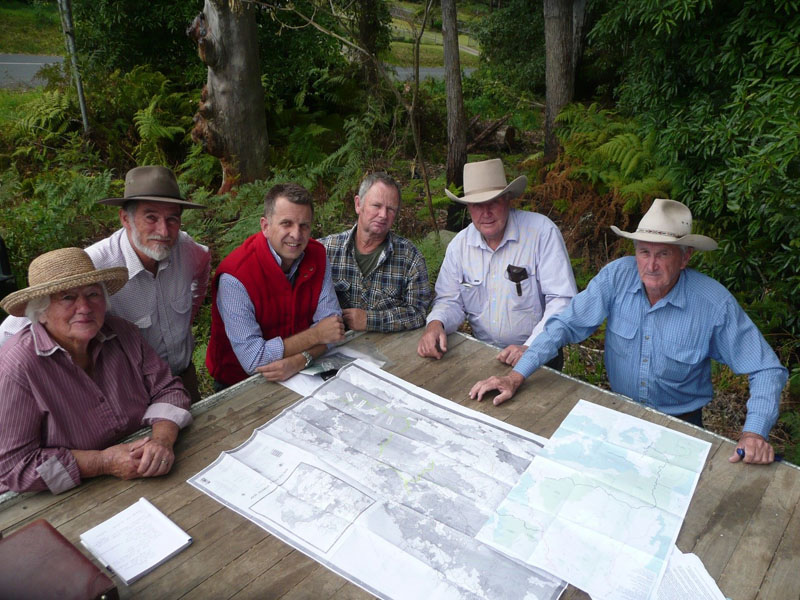
Access of All members meeting with Andrew Constance Member for Bega, with maps spread on the back tray of a ute showing the tracks, 13 October 2012.
L to R, Catherine Lawler OAM, Peter Smith, Andrew Constance, Richard Tarlinton, Brian Clarke and John Davidge.
Access for All continue to work co-operatively with National Parks management. They believe there is more work to done to conserve and maintain our heritage tracks. This includes the further identification of tracks, better route markings and track upgrades, better road access to tracks, facilities for drop off and pick up, camping and places to tether your horse.
Riding High
Horse riders are now able to enjoy the exhilarating experience of riding the interlinking network of tracks. In April a group of Access for All members completed a great adventure, riding from Currowan Creek near Nelligen to Bemboka west of Bega.
The expedition riders were Michael and Melissa O’Brien from Nelligen, Bella Hart of Braidwood- descendant of the Rankin pioneering family of the Deua River, Annabelle Dobson of Bemboka and Kerryn Hopkins of Belowra. The ride took 10 days through spectacular scenic country following a series of interlinking tracks. The good weather helped as the group took on the ever changing landforms, traversing rainforests, dry stony mountain ridges, winding around mountain passes with steep drop offs, steep descents and climbs, river crossings and great camp sites.
As Michael is quick to point out, “the success of such an expedition involves careful route planning, organised equipment, pre-arranged food drops, the right horses and good riders. It’s not for the feint hearted and in some places you need to arrange access through private property and respect the landowners.”
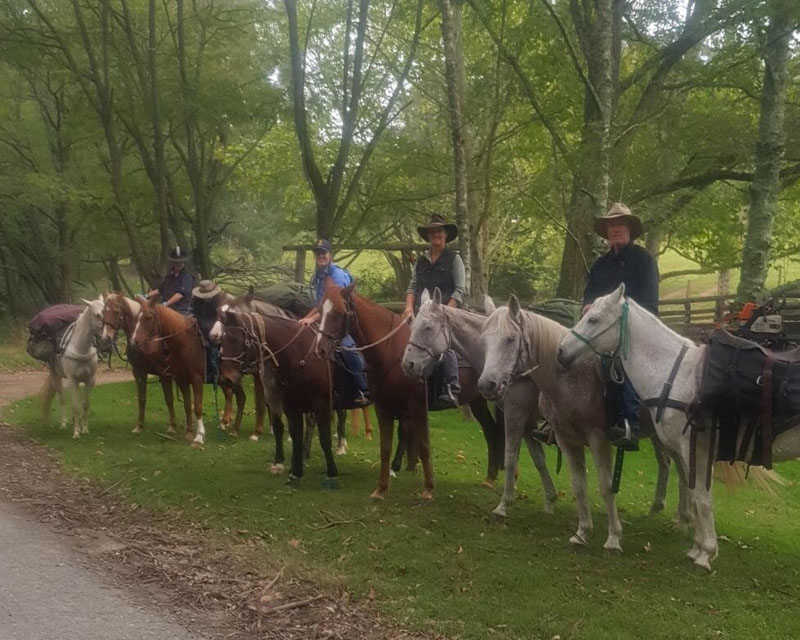
Ready to depart. The group photo with laden pack-horses
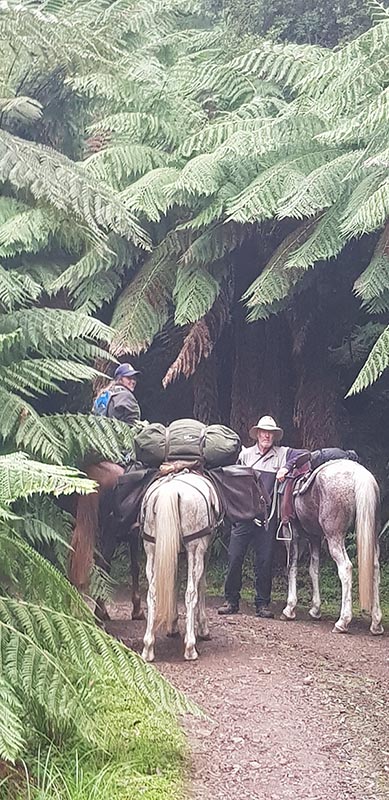
A forest of tree ferns in contrast to the dry stony ridges
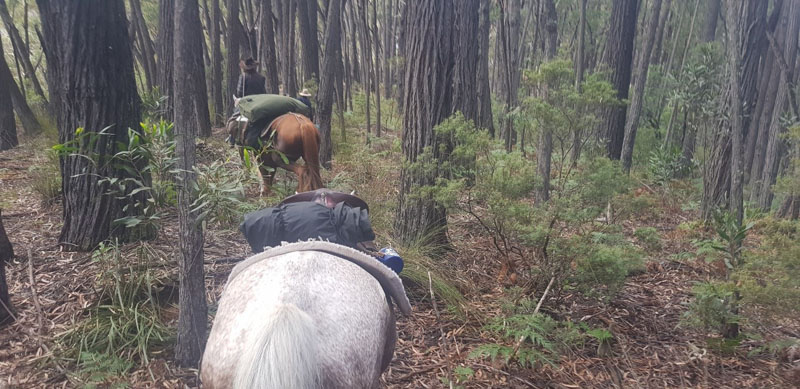
Descending the WD Tarlinton Track to Belowra on the upper Tuross River
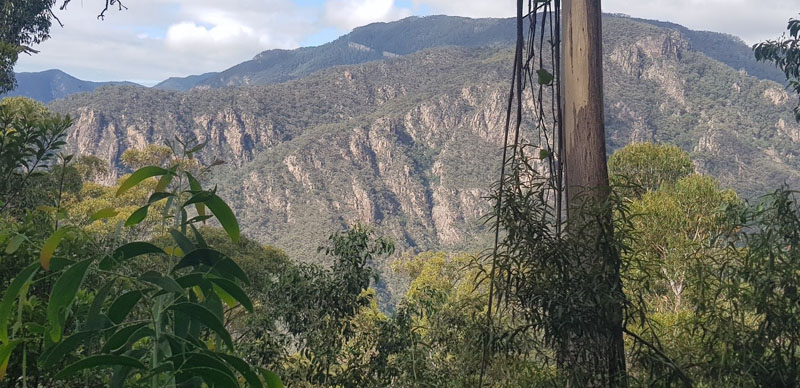
Wadbilliga National Park- spectacular rocky ridges.
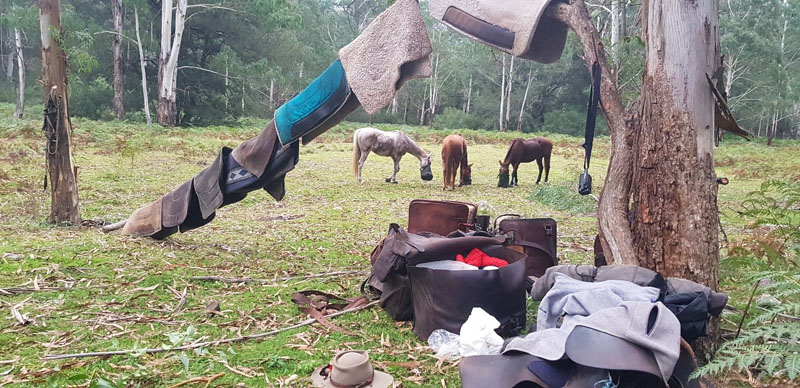
The camp on the halfway point of the WD Tarlinton Track
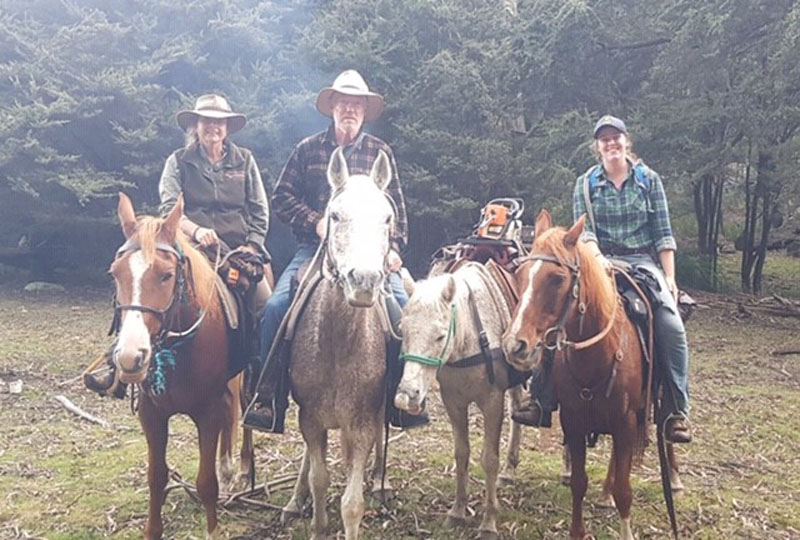
Mellissa and Michael O’Brien and Bella Hart completed the 10 day ride. Annabelle Dobson rode to Bendethera and Kerryn Hopkins to Belowra.
It is important to understand, two of the tracks they used were through wilderness now available to horse riders, namely Shoebridge Track and WD Tarlinton Track. Without these connecting tracks the network would have been broken and the ride could not have happened.
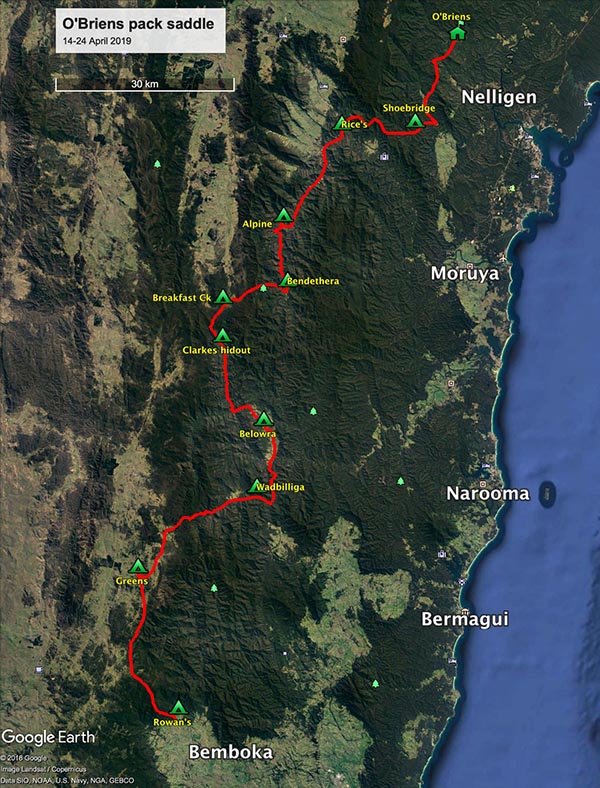
Map showing the track and camp sites of the 10 day ride
To download a PDF of this article click HERE
